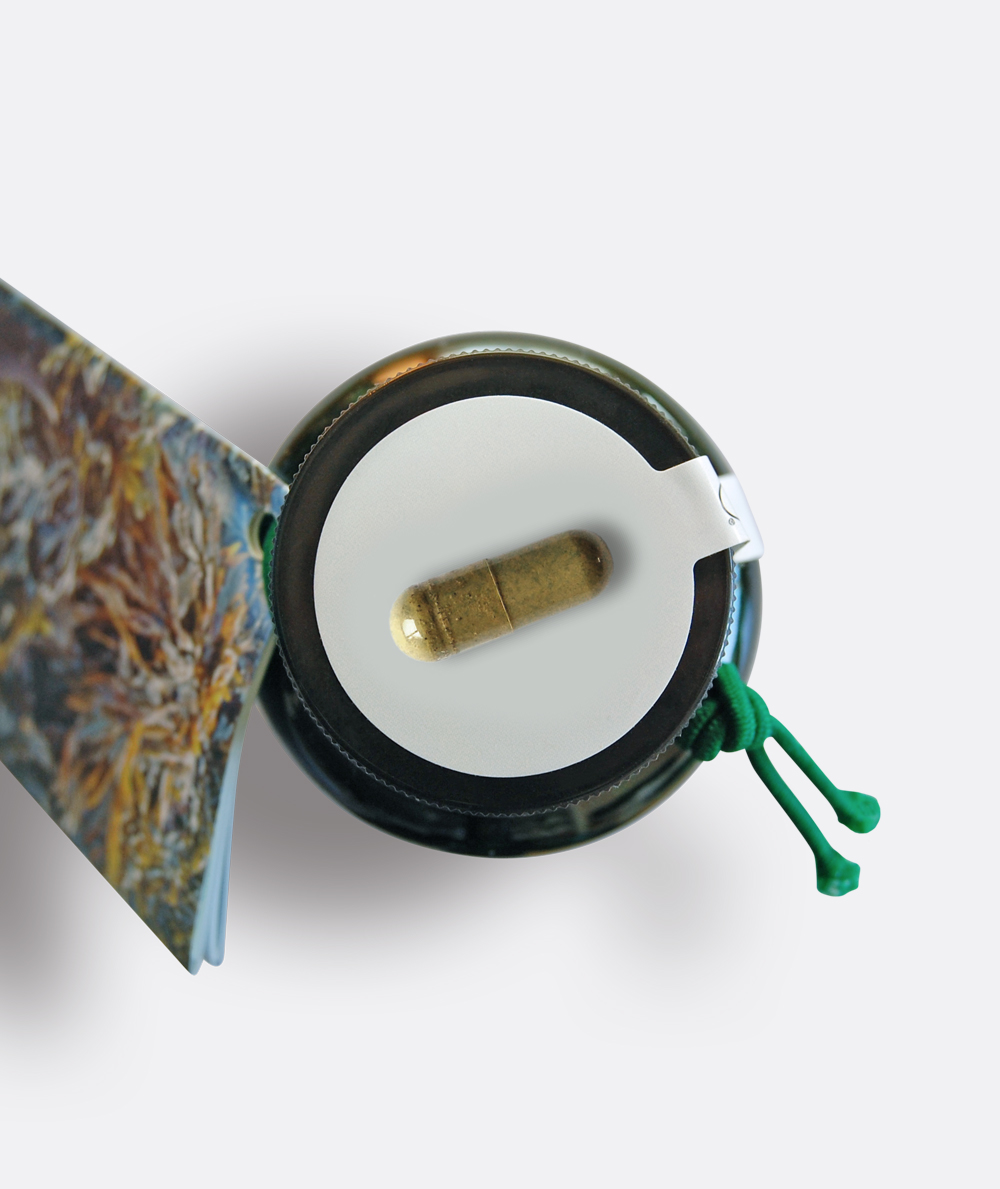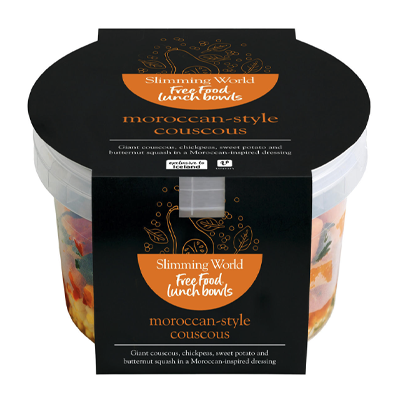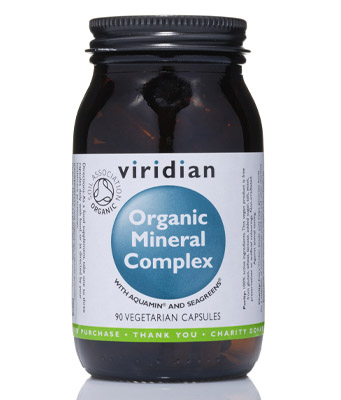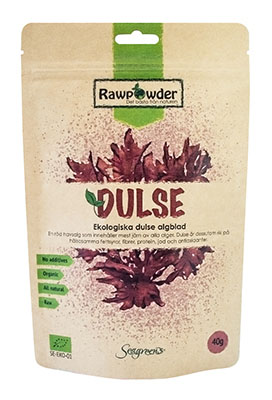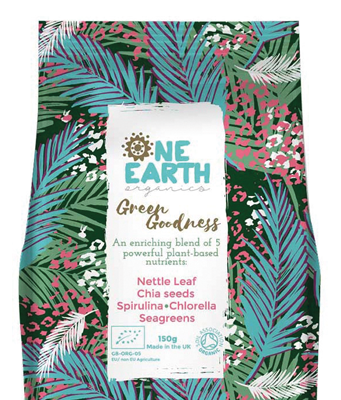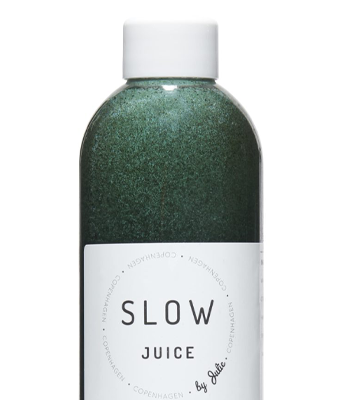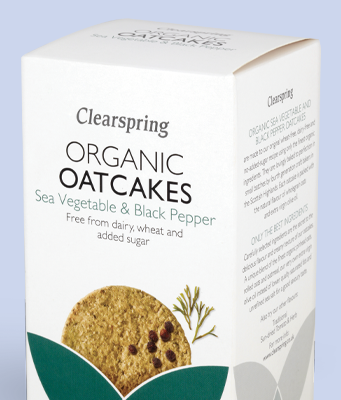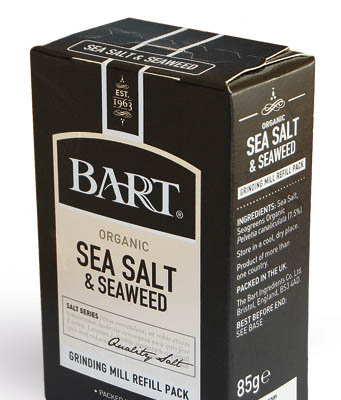Iodine Lite+ 90
€46.94 inc. Tax




Description
Iodine Lite+ Capsules contain pure finely milled Seagreens® native wild seaweeds Fucus vesiculosus, Ascophyllum nodosum, Palmaria palmata and Alaria esculenta whose composition and health benefits Seagreens has studied and documented for over two decades. Vegetable capsules. Nothing added or extracted. Non-allergenic.
All the iodine children need for daily sufficiency. Iodine contributes to the normal production of thyroid hormones, normal thyroid function, nervous system and cognitive function, the normal growth of children, normal energy-yielding metabolism, and the maintenance of normal skin. Plus each capsule contains natural vitamins such as B9 and B12, minerals such as magnesium, selenium and zinc – all the other nutrients the body needs for the effective transport and metabolism of iodine – and contributes a small balance of micronutrients to a normal daily diet. Independent thyroid iodine research on Seagreens® Ascophyllum was published in the British Journal of Nutrition in 2014.
For sufficiency in iodine, wherever there is a known deficiency, one capsule each morning (400mg or 0.014oz). The capsule may be emptied into any food or cold drink, simply by pulling apart. Iodine Lite+ has been developed specifically for children, or to ‘top up’ daily iodine intake. For a higher intake use Iodine+ Capsules. All Seagreens® nutrition products contain varying levels of natural iodine. The uptake of iodine in the body has been shown to be no more than 1/3rd of intake* as shown in the following table. Safe in permanent daily use for all ages.
For more information click on the Profile of nutrients box below. A free booklet Iodine sufficiency from nutritious food seaweed is available for professional study from info@seagreens.co.uk.
British Isles and Nordic region. The best seaweed species are found in different locations. Seagreens has developed 5 food certified remote harvesting locations and production facilities in England, Iceland, Ireland, Norway and Scotland.
Iodine Lite+ Capsules per capsule
(content 400mg)
Such a comprehensive balance of nutrients is found in no other natural food but seaweed. From the primordial ocean to the vegetation and animals which remain our food today, our own bodily composition has its origins in the earliest organisms and the chemistry of life itself. As life forms became increasingly diverse, they adapted to more specific diets. To survive on a narrower range of nutrients and protect themselves against toxicity, each evolved different mechanisms of selectivity and defence. That is why we need a wide variety of land based foods, since each has a little of what we need. But nutrient loss in agricultural soils and manufactured and denatured food makes nutritional balance, especially of all the micronutrients, harder to achieve. Almost as old as the ocean, seaweed is an outstanding whole food which complements and fills the gaps in all land food and special diets.
1g (gram) = 1000mg (milligram) = 1,000,000µg (microgram)
Amino acids
Alanine 0.61 mg, Arginine 0.15 mg, Asparagine 0.20 mg, Aspartic acid 0.19 mg, Cystine and Cysteine* 0.17 mg, Cystathionine 0.20 mg, Glutamic acid 0.92 mg, Glutamine 0.34 mg, Glycine 0.16 mg, Histidine 0.14 mg, Homocysteine 0.2 mg, Hydroxyproline 0.2 mg, Isoleucine 0.15 mg, Leucine 0.17 mg, Lysine 0.16 mg, Methionine 0.17 mg, 1-Methylhistidine 0.2 mg, 3-Methylhistidine 0.2 mg, Ornithine 0.25 mg, Phenylalanine 0.19 mg,, Phosphoserene 1.83 mg, Proline 1.47 mg, Sarcosine 0.2 mg, Serine 0.16 mg, Taurine 0.2 mg, Threonine 0.17 mg, Tryptophan 0.17 mg, Tyrosine 0.15 g, Valine 0.16 mg.
*Cysteine is a non-essential methionine amino acid derivative formed in collaboration with vitamins B6 and B12 whereas cystine, a compound formed when two amino acids form a disulfide bond, is a more stable semi-essential amino acid. Both are important in protein synthesis, detoxification and metabolism and cystine is a substrate for the cystine-glutamate cell transport by which it is readily broken down to cysteine in the cell. Normal human hair and skin contains 10-14% cystine.
Amino acids are…
Simple organic compounds containing both a carboxyl and an amino group which can combine in linear arrays to form proteins in living organisms. There are several important amino acids which have no relation to protein, such as the neurotransmitter aminobutyric acid and betaines. There are 20 common amino acids all of which are present in Seagreens®, which is not the case in any other whole food. The simplest amino acid is glycine, a major inhibitory neurotransmitter in the spinal cord and brainstem of the vertebrate central nervous system.
Antioxidant capacity – principal antioxidant nutrients
Alpha-linolenic acid (ALA) 122.74 µg, Calcium 2,620 µg, Copper 1.36 µg, Magnesium 2,046 µg,, Manganese (part of the antioxidant enzyme Superoxide dismutase) 129.24 µg, Polyphenols (gallic acid equivalent) 5,081.46 µg, Polyphenols (tannins) 6,064.2 µg, Potassium 27,070 µg, Selenium 0.12 µg, Vitamin A (carotenoid precursors) 0.95 µg, Vitamin C 30.66 µg, Vitamin E (alpha-tocopherol) 9.79 µg, Zinc 9.94 µg.
Antioxidants are…
Nutrients widely present in body fluids and tissues that inhibit or remove potentially damaging products of oxidation or oxidizing agents in a living organism. Water-soluble antioxidants are effective in cells and blood plasma while lipid-soluble antioxidants protect cell membranes from lipid peroxidation. In the presence of sufficient nutrients both can be synthesized in the body or obtained from the diet. Antioxidant capacity of Seagreens® wrack seaweeds is higher than in commonly consumed fruit and vegetables, including green tea which has a similar polyphenol content by weight. Seagreens® antioxidants have been shown to inhibit and therefore prolong carbohydrate and lipid digestion with the potential to favourably influence insulin response and the glycemic index of food. They may be effective against reactive oxygen species (ROS) in the lower intestine. See also Polyphenols.
Betaines
Glycine Betaine trace, Gamma Amino Butyric Acid Betaine trace, Delta Amino Valeric Acid Betaine trace, TML (Laminine) trace, L-Carnitine trace, Trigonelline trace.
Betaines are…
Compound derivatives of glycine (an amino acid) characterised by high solubility in water which functions as an osmotic agent in plant tissue. 6 betaines have so far been identified in Seagreens®. See also Amino acids.
Carbohydrates
185.88 mg of which total dietary fibre is 163.77 mg including non-starch polysaccharides Algin, Fucose, Fucoidan, Mannitol, Methylpentosans, Laminarin, Mannuronic acid and Chlorophyll (antioxidant). Soluble fibre is approximately 20% of total dietary fibre, insoluble 80%.
Carbohydrates are…
Organic compounds occurring in foods and living tissues including sugars, starch and cellulose, containing 2 parts hydrogen to 1 part oxygen, the same ratio as water, which can typically be broken down to release energy more readily than proteins or fats. Simple carbohydrates are sweet-tasting sugars which can be absorbed through the intestine into the bloodstream as monosaccharides (glucose, fructose and galactose) and disaccharides (lactose, sucrose and maltose) can be converted to their two monosaccharide bases in the digestive tract. Complex carbohydrates, on the other hand, are commonly known as starches made up of chains of glucose molecules. Typical high starch foods include most grains (wheat, corn, oats and rice) and potatoes. Starch is also broken down in the digestive tract though more slowly than simple carbohydrate. Compared with most vegetables Seagreens® has a valuable ratio of soluble to insoluble fibre, with soluble fibre up to 20% of total dietary fibre. The wide variety of non-starch polysaccharides is also antioxidant, contributing to Seagreens® outstanding antioxidant capacity. Polysaccharides are the most abundant carbohydrates found in food which perform a wide range of functions from storing energy and cellular messaging to endothelial tissue support and protection. They help maintain the immune system and cardiovascuar health and regulate blood pressure and blood sugar levels.
Enzymes
Lipase 7.38 units, Protease 65.83 units, Uronic acid 1.69 units.
Enzymes are…
Biological molecules that catalyse (i.e., increase the rates of) chemical reactions. Important in digestion, enzymes such as amylases and proteases break down large molecules (starch or proteins, respectively) into smaller ones, so they can be absorbed in the intestines. Starch molecules are too large to be absorbed from the intestine, but enzymes hydrolyze the starch chains into smaller molecules such as maltose and eventually glucose, which can then be absorbed. Other nutrients in Seagreens® have beneficial effects on certain digestive enzymes resulting in prolonged carbohydrate digestion and the steadier release of sugars.
Essential fatty acids
Alpha amino-n-butyric acid 2.12 µg, Alpha-linolenic acid (ALA) 122.74 µg, Beta aminoisobutyric acid 2.12 µg, Docosadienoic acid 5.07 µg, Docosapentaenoic (DPA) 5.96 µg, Docosahexaenoic acid (DHA) 2.24 µg, Eicosapentenoic acid (EPA) 1,068.57 µg, EPA and DHA Omega-3 1,070.81 µg, Gamma amino-n-butyric acid 2.12 µg, Oleic acid 1,184.08 µg, Omega-3 1,306.43 µg, Omega-6 829 µg*, Omega 9 1,602.44 µg, Monounsaturated fatty acids 1,776 µg, Polyunsaturated fatty acids 2,136 µg, Saturated fatty acids 1868 µg, Trans fatty acids (mono- and poly-unsaturates) 0.62 µg. *Omega 3:6 ratio 157.6%.
Essential fatty acids are…
EFAs including important-to-the-brain PUFAs (polyunsaturated fatty acids) are fatty acids that humans must obtain from food because the body cannot synthesize them. The term “essential” refers to fatty acids required for many neural and other biological processes, not those that solely act as fuel. Seagreens® Pelvetia seaweed (Channeled Wrack) is particularly rich in essential fatty acids and one reason for its inclusion in Seagreens® Food Capsules and Food Granules blends. It is also available alone as Pelvetia Pieces (formerly called Salad & Condiment).
Minerals
Calcium (antioxidant) 2.62 mg, Magnesium (antioxidant) 2.05 mg, Nitrogen 9.89 mg, Phosphorus 1.41 mg, Potassium (antioxidant) 27.07 mg, Sodium 22.87 mg, Sulphur 22.86 mg.
Minerals are…
Solid and soluble naturally occurring substances available in edible form ranging from so-called rare earths in the form of clays, to various sands and salts, animal tissue (flesh and bones) and plants which absorb them from the soil and the ocean as ‘colloidal’ (able to be bound) minerals which is the soluble form in which they present in Seagreens® seaweeds. Colloidal minerals are never intrinsically toxic. Seagreens® provide a natural balance of all the minerals and trace elements known to be present or needed in the human body. This is of special value because it is otherwise “necessary that we consume some 20 different vegetables in the proper proportions, and that these vegetables have been grown in soil that is sufficiently rich in nutrients and free from the many different chemical products now in common use” (Muller, Colloidal Minerals and Trace Elements, 2002). Colloidal minerals and trace elements of sea or plant origin can be 98% assimilated. Their absorption is 2.5 times greater than that of chelated minerals and 10 times greater than that of non-organic minerals. 7,000 times smaller than red blood cells, colloidal minerals are readily absorbed because they contain a negative charge, while the intestinal wall holds a positive charge, creating a chemical gradient which concentrates colloidal minerals towards the intestinal mucous and enables their absorption. A chelated mineral is bound or held by amino acid molecules which naturally encircle mineral atoms. Isolated metallic atoms do not naturally exist in the body. In Seagreens®, with its ample amino acid component, minerals are bound to protein ions in the most effective form of chelation which comes closest to achieving a neutral pH, which assists their absorption. Minerals help regulate the body’s elimination system and regenerate the blood at a molecular level. Mineral deficiency and imbalance thus puts us at risk of chronic toxicity, endemic in modern societies. Arsenic, for example, is essential for the survival of newborns. Dietary arsenic was eliminated in laboratory tests in rats with the result that their growth rate slowed, they lost their fur, seldom moved and their red blood cells became inactive. When colloidal arsenic was introduced these effects were reversed. In all cases the amount of the element significantly alters its physiological effect. In an ionised form, calcium has coagulant properties, so that a large dose will restore calcium to bone or tissue, whilst very small amounts in colloidal form endows it with regulating properties. All trace elements can be toxic if taken in excess and some, such as aluminium, cadmium, mercury and arsenic are toxic at very low levels and may occur as environmental pollutants. Where they exist in Seagreens® they do so below tolerable levels and due in part to its high content of colloidal minerals, Seagreens® is also a natural binding or chelating agent assisting in the elimination of such potentially toxic heavy metals and other toxic substances. Seagreens® can potentially restore to the body the most primal natural marine balance of minerals and trace elements still available. Like seawater which has a pH between 7.9 and 8.3, Seagreens® are the most alkalising of all foods. It should not be surprising that its simple addition to the daily diet can so dramatically regulate both an overly acidic gastric and intestinal environment and an overly alkaline cellular environment and in addition ameliorate the causes of all kinds of disorders and diseases. Due to its electrolytic composition, in nutrition “seawater fundamentally modifies the mineral content of different tissues by correcting ionic imbalances, which explains the effect it has on allergic diseases. In clinical settings the subjective and objective results were so favourable that it gave the impression of a specific curative effect” (Bensch, Therapeutic Properties of Seawater, Journal of Medicine, 1966).
Polyphenols
5,081.46 µg (gallic acid equivalent).
Polyphenols are…
Nutrients composed of four main classes – phenolic acids, flavonoids, stilbenes and lignans – principally found in fruits, berries, seeds, cereals and vegetables including onions, cocoa and tea. Lignans are derived from the amino acid phenylalanine. Polyphenols also include phenols and tannins. They are secondary metabolites of plants or the bacteria and fungi associated with them, which help protect the plant against aggressive pathogens and radiation. The sometimes confusing term ‘phenolic’ refers to phenol compounds within a larger class of organic ‘polyphenol’ compounds and all typically have valuable antioxidant properties which counter cellular damage and oxidative stress from free radicals (waste or by-products) arising from pollution, smoking and eating rancid or inflammatory foods as well as from the body’s normal metabolic processes. Tannins are particular polyphenolic compounds, found particularly in wines, tea, cocoa and many other plants, consisting of gallic acid derivatives, which bind to and precipitate proteins and are strongly antioxidant. Polyphenols are widely indicated in the prevention of human degenerative diseases and are anti-carcinogenic. The level of polyphenols in Seagreens® is directly relasted to its high antioxidant capacity – see also Antioxidant capacity above.
Protein
61.37 mg.
Proteins are…
Complex organic compounds of high molecular weight, essentially composed of at least 20 different amino acids in peptide linkages containing nitrogen, carbon, hydrogen, oxygen and usually sulphur, ubiquitous in plants and animals as the principal constituents of cell protoplasm. Each protein has a unique, genetically defined amino acid sequence which determines its structure and function. Proteins serve in oxygen transport, muscle contraction, electron transport and other activities, especially as structural components of body tissues such as muscle tissue, hair, collagen, and as enzymes, hormones, immunoglobulins and antibodies. Seagreens® is a source of high quality vegetable protein, containing the full balance of amino acids, of particular use for vegetarians and vegans because most other plant proteins are low in one or other essential amino acids. For instance, grains tend to be short of lysine whilst pulses are short of methionine. This does not mean that vegetarians or vegans need go short on essential amino acids. Combining plant proteins, such as a grain with a pulse, leads to a high quality protein which is just as good, and in some cases better, than more plentiful protein from animal foods. The limiting amino acid tends to be different in different proteins, so when two different foods are combined, the amino acids in one protein can compensate for the one lacking in the other. This is known as protein complementing. Vegetarians and vegans eating a well-balanced diet based on grains, pulses, seeds, nuts and land and especially sea vegetables will be consuming a mixture of proteins that complement one another naturally. Beans on toast, cheese or a peanut butter sandwich, muesli with milk (soya or cow’s) and rice with peas or beans, are all common examples of protein-complementing Seagreens® products could be included in any one of them. The body retains a short-term store of essential amino acids so as long as deficiencies are replenished within a day or two, a well-balanced vegetarian or vegan diet can supply all the protein we need.
Trace elements
Antimony 0.01 µg, Barium 2.89 µg, Beryllium trace, Bismuth trace, Boron 75.03 µg, Bromine 49.12 µg, Cerium 0.24 µg, Caesium trace, Chromium 0.05 µg, Cobalt 0.06 µg, Copper 1.36 µg, Dysprosium 0.01 µg, Erbium 0.01 µg, Europium 3.44 µg, Flouride (acid soluble) 2.62 µg, Gadolinium 0.02 µg, Gallium 0.01 µg, Germanium trace, Gold 0.03 µg, Hafnium trace, Holmium trace, Iodine 150 µg*, Iridium trace, Iron 119.45 µg, Lanthanum 0.09 µg, Lithium 0.21 µg, Lutetium trace, Manganese 129.24 µg, Molybdenum 0.34 µg, Neodymium 0.07 µg, Nickel 0.11 µg, Niobium trace, Osmium trace, Palladium 0.01 µg, Platinum trace, Praeseodymium 0.02 µg, Rhenium 0.01 µg, Rubidium 13.65 µg, Ruthenium trace, Samarium 0.01 µg, Scandium 0.01 µg, Selenium 0.12 µg, Silicon** 76.66 µg, Silver 0.07 µg, Strontium 70.64 µg, Tantalum trace, Tellurium 0.01µg, Terbium trace, Thallium trace, Thorium trace, Thuliam trace, Tin trace, Titanium trace, Tungsten trace, Uranium trace, Vanadium 8.69 µg, Ytterbium 0.01 µg, Yttrium 0.07 µg, Zinc 9.94 µg, Zirconium 0.02 µg.
*For more iodine information and a comparison of iodine levels in Seagreens products see below ‘Iodine levels in Seagreens® nutrition products’.
**Silicon and silica are different chemical species, the key difference being that silicon is an element whereas silica is a compound. Higher levels in seaweed may indicate the coincidental collection of sand during harvesting and is indicative of low grade seaweed unlikely to have been produced to standards for human consumption.
Trace elements are…
Trace elements (or trace minerals) are metalloids or metallic elements which represent only the smallest part of a living organism (less than 1mg per litre of internal fluid) yet are essential in its growth, equilibrium and regulatory processes. Quantity is less important than quality and in natural sources the trace elements exist in ideally balanced proportions and forms which allow the body to recognise and ultilise them. A single trace element may have different roles in numerous biochemical processes in the body. More than 67 have been found in Seagreens® seaweed species, the 58 presented here being regularly monitored. Seagreens continues to work towards the widest possible field of analysis. Like other minerals, trace elements are solid and soluble naturally occurring substances available in edible form ranging from the rare earths in the form of clays, to various sands and salts, animal tissue (flesh and bones) and plants which absorb them from the soil as ‘colloidal’ minerals (in a soluble suspended state). Colloidal minerals are never toxic and this is the soluble form in which they present in Seagreens® seaweeds. The human body and Seagreens® contain all the elements of the Periodic Table that are available to it in its environment. Seagreens® provide a natural balance of all the minerals and trace elements known to be present in the human body in colloidal form. It is otherwise “necessary that we consume some 20 different vegetables in the proper proportions, and that these vegetables have been grown in soil that is sufficiently rich in nutrients and free from the many different chemical products now in common use” (Muller, Colloidal Minerals and Trace Elements, 2002). Colloidal minerals and trace elements of sea or plant origin can be 98% assimilated. Their absorption is 2.5 times greater than that of chelated minerals and 10 times greater than that of non-organic minerals. 7,000 times smaller than red blood cells, colloidal minerals are readily absorbed because they contain a negative charge, while the intestinal wall holds a positive charge, creating a chemical gradient which concentrates colloidal minerals towards the intestinal mucous and enables their absorption. A chelated mineral is bound or held by amino acid molecules which naturally encircle mineral atoms. Isolated metallic atoms do not naturally exist in the body. In Seagreens®, with its ample amino acid component, minerals are bound to protein ions in the most effective form of chelation which comes closest to achieving a neutral pH, which assists their absorption. Minerals help regulate the body’s elimination system and regenerate the blood at a molecular level. Mineral deficiency and imbalance thus puts us at risk of chronic toxicity, endemic in modern societies. Organic arsenic, for example, is essential for the survival of newborns. Dietary arsenic was eliminated in laboratory tests in rats with the result that their growth rate slowed, they lost their fur, they seldom moved and their red blood cells became inactive. When colloidal arsenic was introduced these effects were reversed. In all cases the amount of the element significantly alters its physiological effect. In an ionised form, calcium has coagulant properties, so that a large dose will restore calcium to bone or tissue, whilst very small amounts in colloidal form endows it with regulating properties. All trace elements can be toxic if taken in excess and some, such as aluminium, cadmium, mercury and arsenic are toxic at very low levels and may occur as environmental pollutants. Where they exist in Seagreens® they do so below tolerable levels and due in part to its high content of colloidal minerals, Seagreens® is also a natural binding or chelating agent assisting in the elimination of such potentially toxic heavy metals and other toxic substances. Seagreens® can potentially restore to the body the most primal natural marine balance of minerals and trace elements still available. Like seawater which has a pH between 7.9 and 8.3, Seagreens® are the most alkalising of all foods. It should not be surprising that its simple addition to the daily diet can so dramatically regulate both an overly acidic gastric and intestinal environment and an overly alkaline cellular environment and in addition ameliorate the causes of all kinds of disorders and diseases. Due to its electrolytic composition, in nutrition “seawater fundamentally modifies the mineral content of different tissues by correcting ionic imbalances, which explains the effect it has on allergic diseases. In clinical settings the subjective and objective results were so favourable that it gave the impression of a specific curative effect” (Bensch, Therapeutic Properties of Seawater, Journal of Medicine, 1966).
Vitamins
A (carotenoids) 0.95 µg, B1 (thiamin) 0.19 µg, B2 (riboflavin) 0.25 µg, B3 (niacin or vitamin PP) 13.57 µg, B5 (pantothenic acid and calcium pantothenate) 0.002 µg, B6 (pyridoxine) 0.12 µg, B9 (folate) 1.43 µg, B12 (cobalamin) 0.06 µg, C 30.66 µg, E (alpha-tocopherol) with all the isomers of wheat germ 9.79 µg, D2 0.001 µg, D3 trace, H (biotin or vitamin B8) 0.07 µg, K (K3 phytomenadione, K1 phylloquinone, K2 menaquinone-4 and menaquinone-7) 0.69 µg.
Vitamins are…
Organic fat-soluble or water-soluble substances that are required in small amounts, necessary for numerous special functions and affected by environmental conditions such as light, heat and air. Food storage, processing and cooking can all reduce the level of vitamins in food. The fat-soluble vitamins are A, D, E and K which can be stored in the body and so dietary sources are not needed every day. The water-soluble vitamins are C and the B group which includes B1, B2, B3, B6, B12, folic acid, biotin and pantothenic acid. The body is less able to store water-soluble vitamins, with the exception of vitamin B12 which is stored in the liver, and so they are needed daily and are more easily lost during cooking. Vitamin A, C, D2, D3 and E are also antioxidants. Seagreens® contain an unusually comprehensive balance of small but significant amounts of all these vitamins.
Nutritional values (typical) per 100 g
Energy 174 kc / 716 kj
Protein 15.34 g
Carbohydrate (total) 46.47 g
of which
Carbohydrate (available) 5.16 g
Sugars trace
Fat 0.95 g
of which
Saturates 0.22 g
Mono-unsaturates (cis) 0.37 g
Mono-unsaturates (trans) 0.08 g
Polyunsaturates 0.21 g
Polyunsaturates (trans) 0.07 g
Dietary fibre (AOAC) 40.94 g
of which
Insoluble fibre 32.17 g
Soluble fibre 8.08 g
Sodium 2.89 g
Moisture 9.8 g

Iodine is…
A naturally occurring mineral element, drawn from the ocean into the plant, transformed into soluble iodine (I2) and Iodide (I–), chelated (bound) to protein ions in the seaweed. Iodine contributes to normal thyroid, skin, nervous system and cognitive function, energy-yielding metabolism, and normal growth in children. Iodine levels in different seaweed species have predictable variances and averages which in Seagreens®, are particularly well documented. In Seagreens® Ascophyllum nodosum the average iodine level has changed over 10 years by 150 points from 720 to 870µg/g. In other Seagreens® species the average iodine ranges from 200µg/g in Palmaria (Dulse), to 262µg/g in Pelvetia (Channel Wrack), 425µg/g in Fucus (Bladder Wrack) and 589µg/g in Alaria (Winged Kelp, often wrongly called Wakame) with a wider natural variance than many other minerals. The British Health Food Manufacturers’ Association (HFMA) advises that iodine supplementation should not exceed 500µg iodine per day. The European Food Safety Authority (EFSA) allows an upper tolerable daily intake of 600μg day (EFSA NDA Panel, 2014) which permits the consumption of larger quantities of seaweed, among other iodine sources (seafood, meat and dairy products). In the USA this figure is 1100 µg per day. Iodine is mainly stored in the thyroid gland, and in a variety of tissues including mammary and salivary glands, eyes, gastric mucosa, and the cervix. Iodine receptors reject excessive iodine, which can be freely excreted in urine. “We found a difference in the amounts of iodine excreted consistent with the generally held view that most of the iodine will be excreted in urine if iodine stores are replete. We found that colonic fermentation is important to free iodine from the seaweed matrix (which) may delay iodine absorption with (the seaweed) iodine being released from the food over a longer period” (Combet et al, 2014). Naturally occurring halogens such as chlorine and bromide, also ubiquitous as industrial pollutants, may compete for iodine receptors in the body and reduce the bioavailability of total dietary iodine. A 2018 review in the international scientific journal Food Chemistry noted that “concerns over iodine toxicity from eating seaweed appear to be unfounded. However, seaweed must be sourced from near-pristine and clean environments where there is no concern for biological and chemical contamination or other environmental pollutants”.
NFS makes the quality of certified seaweed in a product transparent to consumers, with access to its nutritional profile. The total composition of NFS seaweed is monitored and must meet minimum and maximum criteria both for the good stuff (nutrients) and the bad stuff (contaminants), compliant with the most stringent international food safety standards. NFS is more than a quality standard, enabling the sustainable production of world class seaweed for human consumption which gives seaweed producers access to new markets at home and abroad. Rooted in the principles of biodynamic, organic and sustainable farming, with aspects of marine science, botany, nutrition and conservation, NFS has been administered by the Seaweed Health Foundation together with the Biodynamic Association since inception in 2014.
It means Seagreens® capsule content is at least what is stated, unlike standard industry practice which allows ‘average’ content in capsules for speed of filling.
It is our policy never to solicit opinions or endorsements.
“Seagreens® are good at addressing the whole person and balancing the body systems…whether the client needs their immune system boosting, toxins chelated, their cholesterol and blood pressure lowered, or their skin and hair improved…if people are very ill or just need a daily maintenance support. Seagreens’ nutritional composition efficiently supports these actions. Many symptoms dissipate and they notice the difference if they run out. I have been practising as a clinical nutritionist for nearly 10 years and have the choice of hundreds of supplements to prescribe for my clients, but more often than not I recommend Seagreens® Food Capsules and Food Granules.”
Annie McRae Dip IoN, Sussex 2006
“I am now prescribing Seagreens® to almost all my patients as a natural source of vitamins, minerals, amino acids and other nutrients. I see a lot of health improvements: from improved energy and stamina to better memory and skin. It is the only supplement I have found so far that stops children biting their nails – a sign of nutritional deficiencies.”
Dr N. Campbell-McBride MD MMedSci(neurology), MMedSci(nutrition), Cambridge 2006
“I would like to thank you on behalf of my clients, for the wonderful effects of Seagreens® when used in conjunction with a personalised nutrition programme: loss of weight in obstinate non-loss cases, including low thyroid, and fabulous midriff and hip reduction in all. The health benefits are amazing especially in pre-IVF cases where removal of heavy metals are so essential.”
Anne Gardner, Nutritional Therapist, Middlesex 2007
“I’ve been using Seagreens for a while, need to stock up again but really think they have benefitted my health especially a low thyroid and have so far avoided having to take medication.”
VJ, England 2013
“I am so very impressed because almost as soon as I began every day, the hot flushes stopped! I feel generally more balanced and my energy no longer fluctuates as it has been doing for some time now.”
AW, Sussex 2017
“Since taking Seagreens I am convinced mine has improved and had said as much to my husband before I read in your research summary that iodine contributes to, amongst over things, maintenance of normal skin. Interesting!”
JB, England 2018
Related Products
-
- Products
Iodine+ Capsules 60
- €30.49 inc. Tax
- Add to cart




